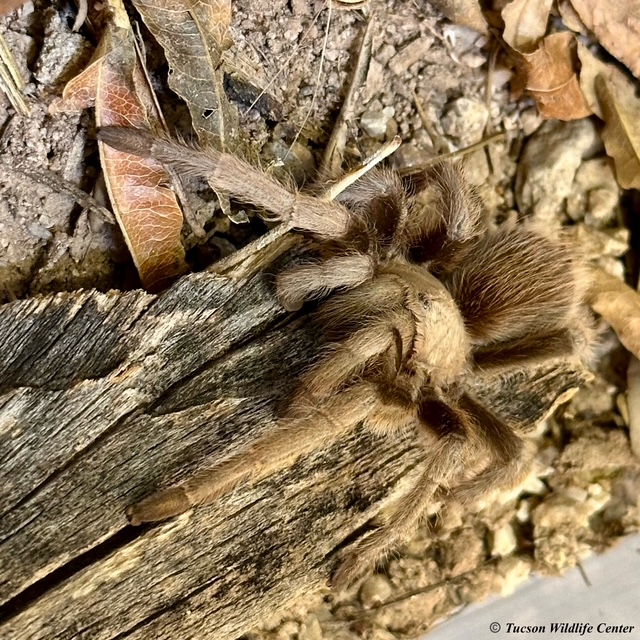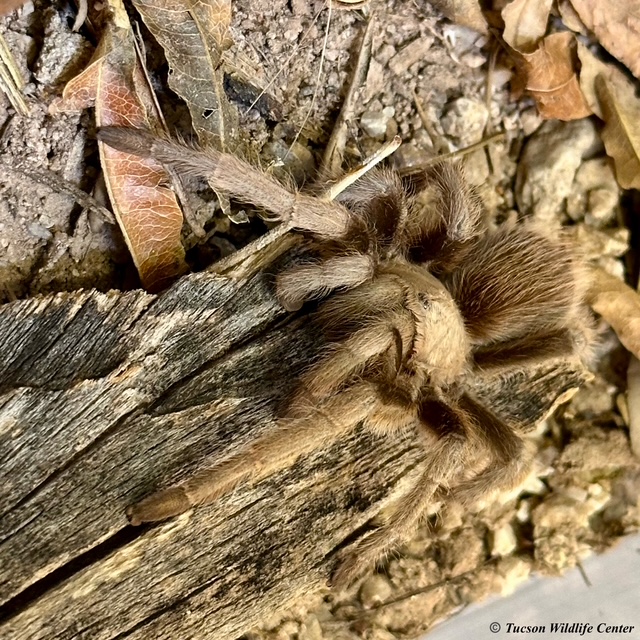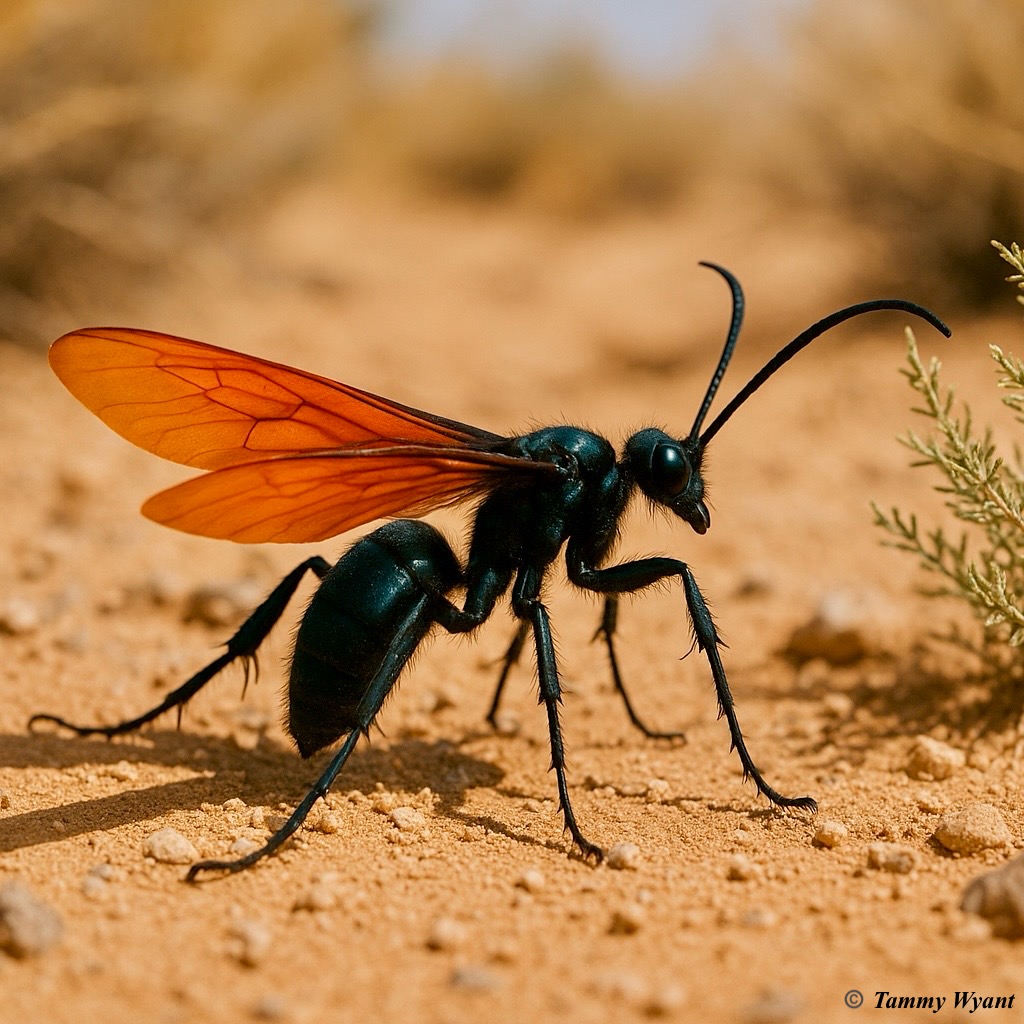
Tarantula
Recently, several tarantulas have been brought to Tucson Wildlife Center by well-meaning residents who saw them being attacked by tarantula hawk wasps and rescued them. We understand it is difficult to watch—and looks like the tarantula is suffering—but this is a natural process, and we do not recommend intervening.
During these encounters, the tarantula hawk wasp—one of the largest wasps in the world and common here in Arizona—uses her powerful sting to paralyze a tarantula. She then drags the immobilized spider to an underground burrow, lays a single egg on its abdomen, and when the larva hatches it feeds on the still-living tarantula, avoiding vital organs until the end. This ensures fresh food for the developing wasp until it is ready to pupate.
As unsettling as this may sound, it is an essential part of the desert’s balance. Tarantula hawk wasps rely on tarantulas to reproduce, and yet tarantula populations remain stable. Adult wasps live on nectar and serve as important pollinators of desert plants like milkweed and mesquite, helping sustain many other species. But even these wasps have predators—greater roadrunners have been observed preying on them, reminding us that no creature exists outside the food web.
If you see a tarantula being carried off by a wasp, the kindest action is to let nature take its course. Both tarantulas and tarantula hawk wasps play vital roles in our desert ecosystem. Allowing these natural interactions to unfold helps keep our fragile environment thriving.
If you would like to help patients like this tarantula, click this link to donate,
Another way you can contribute is to visit our “wish list” on Amazon or Chewy below:
We appreciate it, as will all the wild animals in our care!



Show your support with a minimum $25 donation and we’ll send you a “KEEP TUCSON WILD” sticker. Click the bumper sticker to donate.

